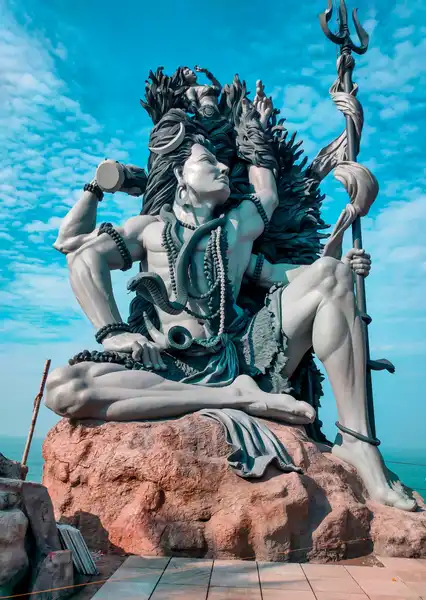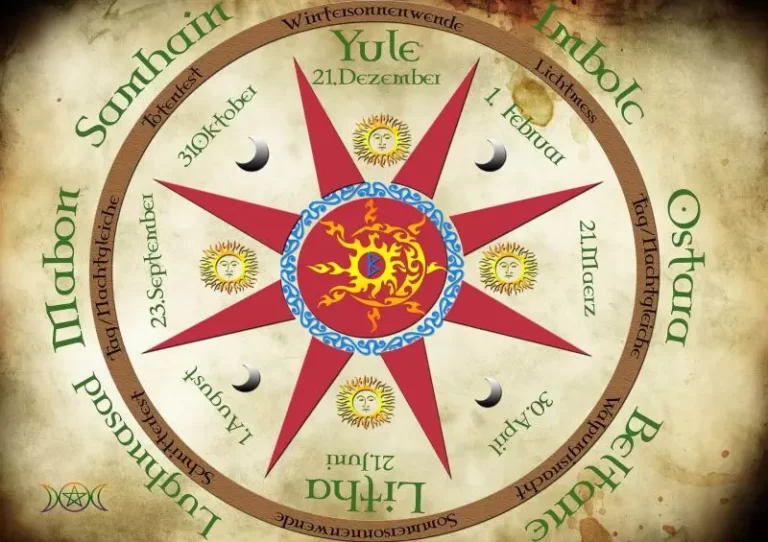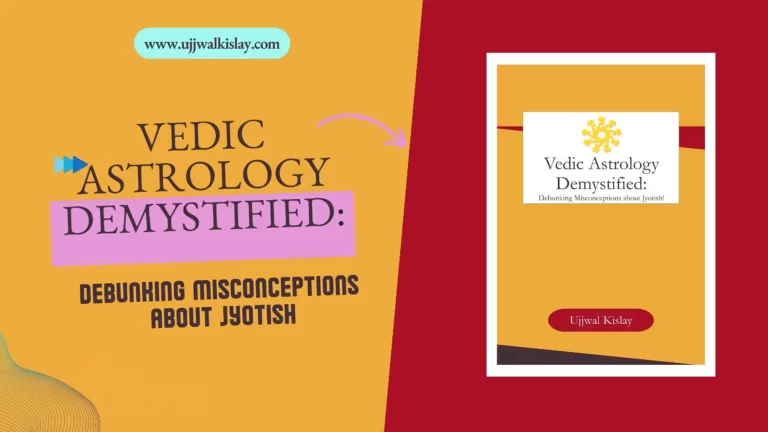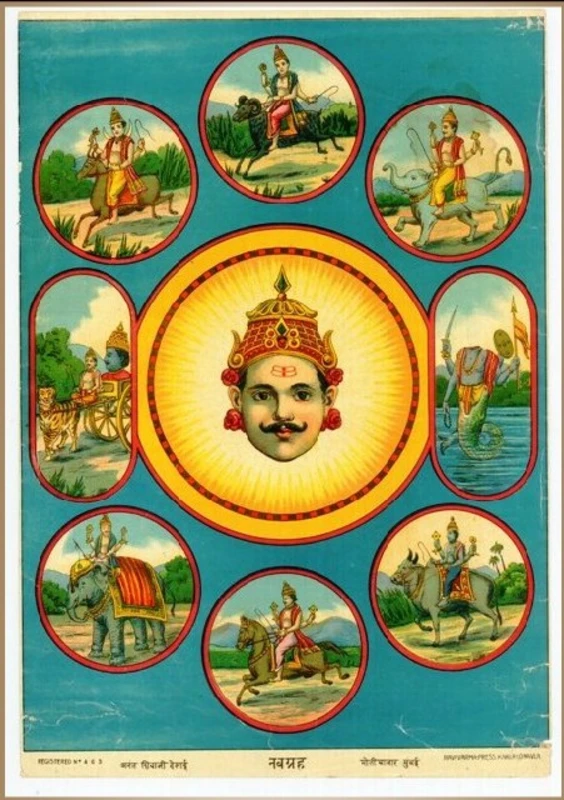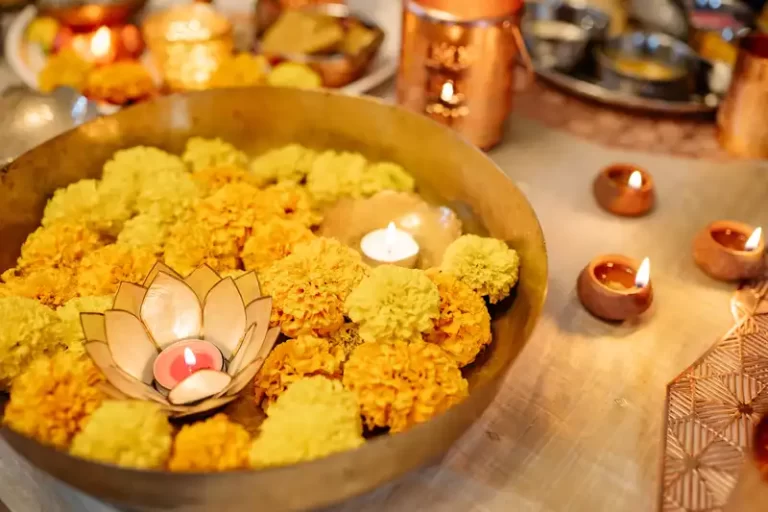Chhath Mahaparv: Honoring the Sun God and Celebrating Nature’s Bounty
Introduction:
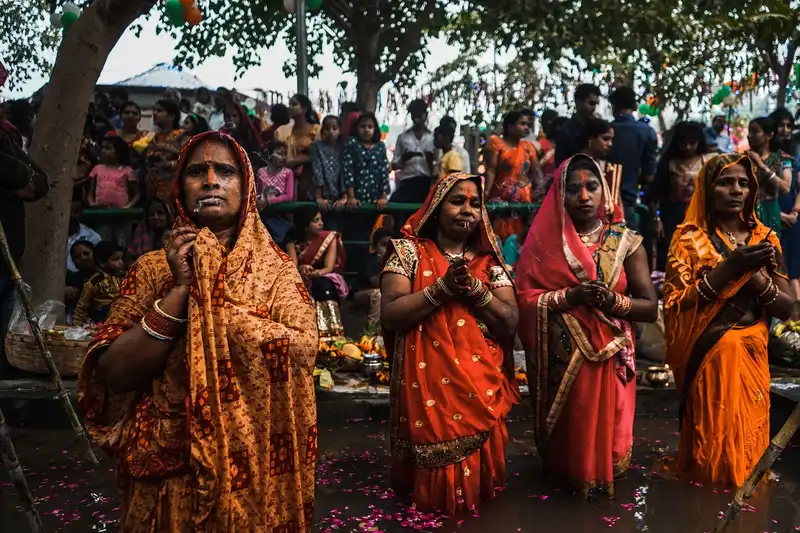
In the expanse of northern India, an extraordinary and venerable festival recognized as “Chhath Mahaparv” unfurls. Distinct from its counterparts, this event venerates the Sun God, Surya, and Chhathi Maiya, the epitome of energy and nature. Taking place six days subsequent to Diwali, the festival involves exacting rituals, fasting, and ablutions in rivers—predominantly conducted by women. It designates a phase of profound spiritual communion and adoration for the natural constituents, with a concentrated emphasis on the sun’s pivotal function in nurturing life and dynamism on Earth.
Chhath Mahaparv transcends its spiritual connotations to encapsulate cultural and ecological implications. The traditions embedded in the festival fuse ancestral practices, encompassing offerings of fruits, sugarcane, and customary delicacies during the sun’s ascent and descent. For agriculturists and communities residing in proximity to rivers, the festival carries distinct pertinence, recognizing water and the sun as imperative to agrarian prosperity. Moreover, the practice of immersion in rivers and standing in water during sunrise and sunset accentuates a profound accord with nature, nurturing ecological mindfulness and sanctity.
Within the domain of celebrations, Chhath Mahaparv emerges as an illustrious exemplar of spirituality, culture, and the natural realm converging. It extols the life-affirming vigor of the sun, accentuates the distinctive customs bequeathed across generations, and underscores the profound interrelation between humanity and its milieu. As the sunlight bathes the waters in the course of this festival, a spiritual luminosity also envelops the devotees, fostering a deep-seated sense of unity with the cosmos.
Understanding Chhath Mahaparv:
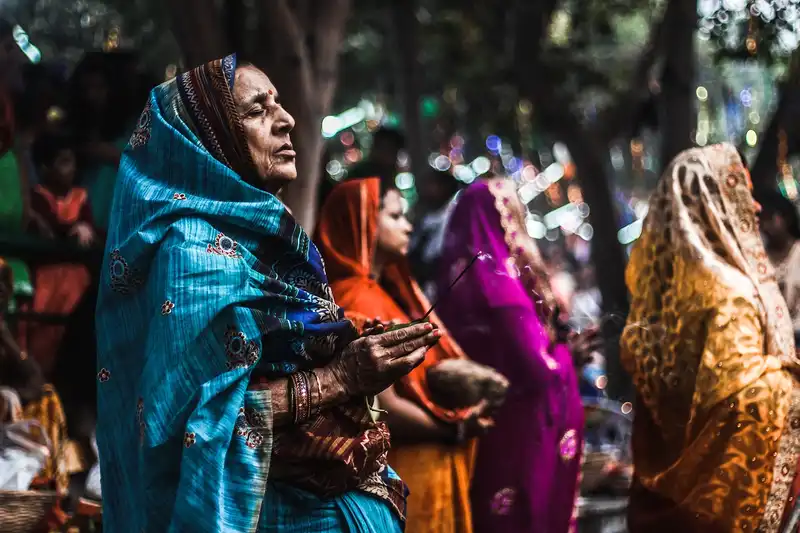
The term “Chhath Mahaparv,” derived from its Sanskrit origins, directly translates to the “Sixth Grand Festival,” signifying its observance on the sixth day of the Hindu lunar month of Kartik, following the Diwali celebrations. Firmly ingrained within the cultural tapestry of northern India, this festival is distinguished by its fervent and exultant rituals. The nomenclature itself carries a weighty import, underscoring its position as the sixth cardinal festivity within the Hindu calendar.
The festival underscores themes of purity, devotion, and the inherent vigor of the natural realm. Practitioners meticulously engage in preparatory purifications, involving restraint, cleanliness, and a stringent vegetarian regimen. The rituals, predominantly overseen by women, entail meticulous attention to detail, accentuating the underlying fervor that propels the entire festive affair. The act of supplication by the riverbank, with devotees immersed in water up to their waists, symbolically captures the profound interconnectedness linking humanity and the natural domain. It encapsulates humility in the face of nature’s magnificence, fostering a profound sense of harmony.
Chhath Mahaparv underscores the philosophy that nature is not a mere backdrop to human existence; rather, it is an integral part of it. The festival’s rituals reiterate the belief that by synchronizing with the rhythms of the natural world, individuals can tap into a profound reservoir of resilience and spirituality. The cyclic pattern of the sun’s ascent and descent serves as poignant reminders of life’s inherent cyclical essence, resonating with themes of rejuvenation and transformation. In this manner, Chhath Mahaparv emerges as a distinctive celebration that venerates the Sun God, exalts the energies of nature, and amplifies the virtues of purity, devotion, and cosmic unity.
Chhath Mahaparv resonates with the principle that nature isn’t just a backdrop to human existence, but a fundamental element thereof. The festival’s rituals reaffirm the belief that by synchronizing with the rhythm of the natural world, individuals can access a profound reservoir of resilience and spirituality. The sun’s rise and descent stand as poignant reminders of the cyclic essence of existence, echoing themes of renewal and metamorphosis. Consequently, Chhath Mahaparv emerges as a unique celebration that offers reverence to the Sun God, extols the dynamic forces of nature, and amplifies the virtues of purity, devotion, and universal harmony.
Spiritual Significance of Chhath Mahaparv:
Chhath Mahaparv, a pivotal Hindu festival predominantly observed in the Indian states of Bihar, Jharkhand, and Uttar Pradesh, bears profound spiritual implications for its adherents. Rooted in venerable customs and steadfast beliefs, this celebration serves as an homage to the Sun God, a representation of divine energy and vitality. Practitioners engage in a rigorous four-day ritualistic practice encompassing fasting, prayer, and expressions of gratitude to the Sun.
Central to the essence of Chhath Mahaparv resides an unwavering conviction that the Sun God, often referenced as Surya Dev, transcends the status of a mere celestial entity; it embodies a cosmic reservoir of energy, dynamism, and life force. The Sun is revered as a deity that sustains all life on Earth, casting illumination both outwardly and within. This veneration seamlessly aligns with the Hindu concept of ‘Prana’ – the essential life essence permeating all facets of existence. Through the conduit of this festival, devotees exalt the Sun God as the ultimate dispenser of these vital forces, acknowledging the intricate interplay between the corporeal and metaphysical dimensions.
Chhath Mahaparv, surpassing its spiritual nucleus, materializes as a testament to the symbiotic relationship between humanity and the natural realm. The festival unfolds against the canvas of the ascending and descending Sun, emblematic of the cyclic cadence of life. As adherents offer their supplications and tributes, they are confronted by the cyclic patterns of existence, the shifting seasons, and the profound interdependence characterizing all manifestations of life. This deepening connection with the natural world fosters a profound sense of affinity and kindles a fervent appreciation for its abundant bestowments.
The exacting rituals enshrined within Chhath Mahaparv necessitate unyielding self-discipline. Practitioners, frequently enduring fasting and contending with adverse conditions, manifest their resolute commitment to this spiritual pilgrimage. This journey cultivates virtues such as endurance, inner fortitude, and unwavering determination. Additionally, the festival instills humility and a recognition of forces beyond human dominion, reinforcing the concept of divine alignment.
Four Days of Chhath Mahaparv:
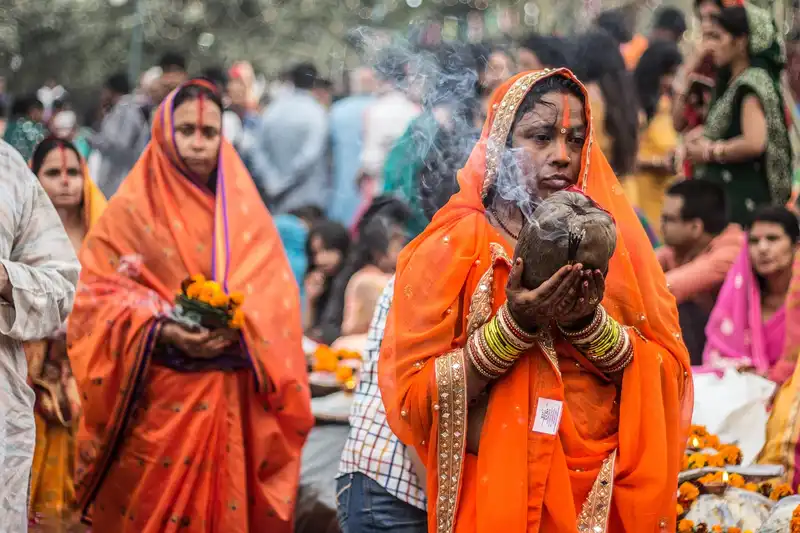
Chhath Mahaparv, extending across a span of four days marked by fervent devotion and exacting observance, holds a position of reverence within the annals of ancient Hindu festivals. Each day comprising this festival bears a unique significance, accompanied by rituals that collectively shape a comprehensive and spiritually enriching experience.
Nahay Khay (First Day):
The commencement of Chhath Mahaparv inaugurates with Nahay Khay, an initiation marked by the purification rite. Adherents gather along riverbanks or adjacent water sources to engage in a ritualistic bath prior to the break of dawn. This symbolic ablution serves to cleanse both the physical and spiritual dimensions, establishing a foundational platform for the forthcoming days. Subsequent to the purifying immersion, they proceed to meticulously prepare and partake in a distinctive repast, signifying an embodiment of devotion and personal refinement.
Kharna (Second Day):
Kharna, the subsequent day, unfolds with an entire day of fasting. Devotees exercise restraint, refraining from the consumption of sustenance or liquids until the culmination of evening ceremonies. This day underscores asceticism and self-control, serving to reaffirm their unwavering allegiance to the Sun God. With the sun’s descent, a unique prasad, consisting of kheer, a sweet rice pudding, is meticulously fashioned. Following its consecration to the Sun, families collectively conclude their fast, partaking in the prasad, thereby sealing the day’s observance.
Sandhya Arghya (Third Day):
Sandhya Arghya, the twilight offering, materializes as a magnificent spectacle. Practitioners congregate along the riverbank, clutching earthen lamps and offerings. Set against the panorama of the sinking sun, they bestow reverence upon the Sun God, articulating profound gratitude for the energy that sustains life. The symphonic rhythm of chants and hymns fosters an atmosphere of unwavering devotion, as they present offerings of fruits, sugarcane, and thekua (a traditional sweet) to the receding sun.
Usha Arghya (Fourth Day):
Chhath Mahaparv reaches its zenith with the Usha Arghya, the sunrise offering. Amidst the veil of predawn darkness, devotees convene beside the river, this time to embrace the burgeoning day with reverence. The ascending sun is greeted with profound gratitude and a rekindled vitality. Offerings, incantations, and supplications accompany the sun’s ascent, culminating in the culmination of the Chhath Puja as sunlight bathes the world in its radiant embrace.
The four days of Chhath Mahaparv – Nahay Khay, Kharna, Sandhya Arghya, and Usha Arghya – seamlessly weave into a spiritual odyssey that encapsulates purification, self-discipline, and devotion to cosmic energies. This profound observance nurtures the rapport between adherents and the flux of nature, fostering a profound comprehension of the interwoven connection that binds humanity with the vast cosmos.
Nature’s Worship:
Chhath Mahaparv, an ancient Hindu festival, stands as a powerful testament to the intricate dance between humanity and the natural world. Amidst the rapid currents of modernity, this celebration hearkens back to an era when civilizations were intimately attuned to nature, drawing sustenance and inspiration from its rhythmic cadence.
A pivotal facet of Chhath Mahaparv resides in the observance of rituals at the water’s edge, often along riverbanks or the perimeters of ponds and lakes. This deliberate choice of location is not mere happenstance; it signifies a conscious acknowledgment of water’s role in nurturing existence, highlighting the interdependence of all living entities. Devotion directed towards rivers underscores the fundamental importance of water, not solely for physical nourishment, but also for spiritual cleansing and growth.
The Sun God, situated at the heart of Chhath Mahaparv, epitomizes the ultimate source of energy and vitality. As devotees offer their prayers during the twilight hours and dawn, they acknowledge their reliance upon the life-affirming rays of the sun. These rituals resonate with an innate understanding of the symbiotic relationship between humans and the ecosystem. Furthermore, the presentation of offerings such as fruits and thekua, a traditional confection, pays homage to the Earth’s bounty, showcasing a profound sense of gratitude for the planet’s resources.
Beyond its religious connotations, this festival encapsulates indigenous wisdom transmitted across generations, urging humanity to coexist harmoniously with their surroundings. It beckons individuals to momentarily pause, introspect, and immerse themselves in the rhythm of nature. In this contemplative engagement, it nurtures a revitalized reverence for the environment and instills a sense of responsibility for the well-being of future generations.
Rituals and Practices:
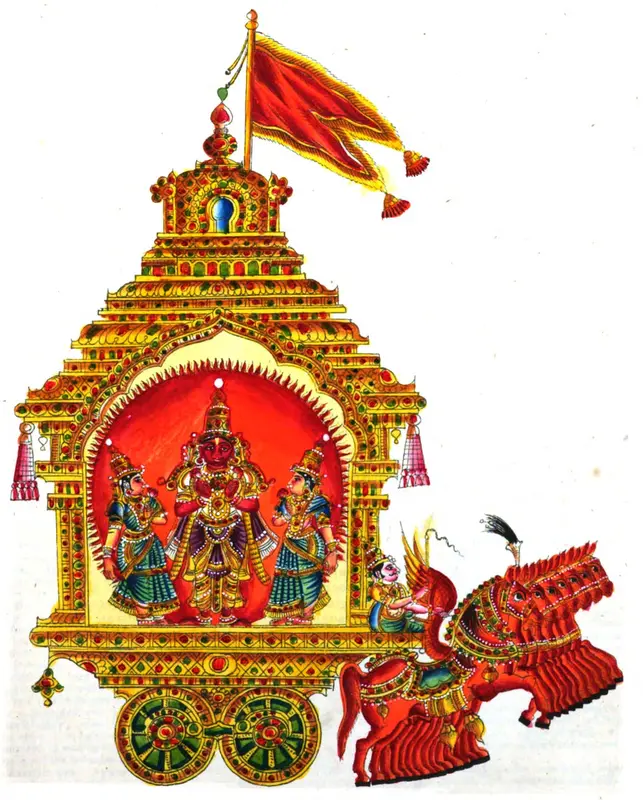
Chhath Mahaparv, an intricate Hindu festival, encompasses a sequence of observances and traditions that magnify devotion, purity, and a profound attunement to nature. Unfolding across a span of four days, each ceremonial act carries a distinct significance, contributing to an all-encompassing spiritual expedition.
Central to Chhath Mahaparv is the practice of fasting. Devotees embrace abstinence from both sustenance and hydration, exemplifying a commitment to self-discipline and spiritual dedication. This act serves to purify both body and mind, cultivating an inner state of pristine clarity. Amidst the festival, adherents rise before the break of dawn to offer prayers to the ascending sun. These invocations resonate with gratitude for the Sun God’s life-renewing vitality while beseeching blessings upon the well-being of their families.
The Arghya, symbolizing the offering of water, emerges as a poignant rite observed during both the sunrise and sunset hours. As the sun ascends and descends, devotees stand amidst the water, facing the sun, and proffer water along with symbolic offerings. These contributions, encompassing fruits, sugarcane, and thekua, are presented on trays fashioned from bamboo or sugarcane sticks. This gesture encapsulates the reciprocity of energy with the Sun, reinforcing the cyclic dance between humanity and the natural world.
Throughout the duration of the festival, adherents diligently uphold a state of mental and physical purity. They forsake negative emotions and actions while embracing practices that cultivate equilibrium and positivity. This unwavering commitment to sanctity serves as a personal code of conduct as well as a tangible manifestation of the festival’s overarching theme – a profound reverence for the harmonious rhythms of nature.
Cultural and Regional Practices:
Having originated in Bihar, Jharkhand, and Uttar Pradesh in India, Chhath Mahaparv is passionately embraced with a steadfast adherence to traditional rites. Devotees hailing from these regions congregate along riverbanks, lakeshores, and ponds to participate in a multifaceted array of rituals, spanning sanctified ablutions, fasting, the reverent offering of Arghya, and the observance of twilight and dawn ceremonies.
In Bihar, the festival unfolds with grand processions, cultural revelries, and communal congregations that foster a profound sense of unity and camaraderie. In contrast, other regions may mark the occasion in a more intimate, familial fashion, underscoring the bonds within households. Certain communities channel the festival’s spirit into acts of charity, extending its ethos of compassion and altruism to those less fortunate.
The myriad expressions of Chhath Mahaparv’s observance across regions and communities contribute to its depth and magnificence. This diversity serves as a testament to the festival’s adaptability and its capacity to harmoniously bind individuals while venerating their unique cultural legacies. It underscores the universal themes of gratitude, devotion, and the interplay between humanity and nature, while simultaneously accentuating the allure of indigenous traditions and customs.
Balancing Tradition and Modern Life:
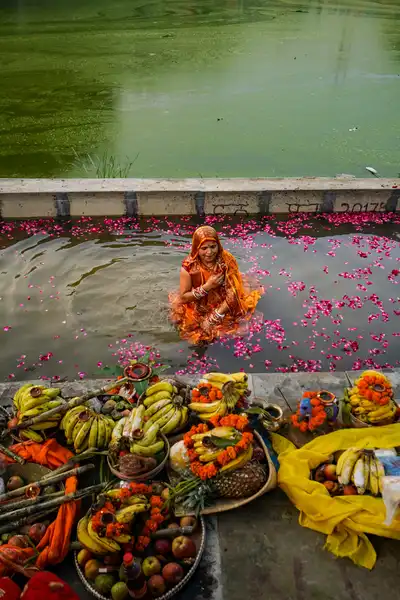
Amidst the rapid currents of today’s fast-paced era, where modern families grapple with an intricate tapestry of responsibilities, harmonizing the observance of Chhath Mahaparv with the demands of daily life emerges as a notable challenge. The festival’s rigorous rituals and time-intensive practices often intersect with the demands of bustling schedules, work commitments, and urban routines. Yet, within this intricate backdrop, contemporary families ardently strive to preserve their cultural legacy and spiritual traditions.
Maintaining the authenticity of Chhath Mahaparv’s traditional practices while synchronizing them with modern living demands a conscientious approach. Families frequently engage in foresight, meticulously carving out dedicated time slots for rituals amid their daily routines. This might entail flexible work arrangements, engaging all family members in preparatory activities, and orchestrating logistical arrangements to convene at water bodies. Upholding the core ethos of the festival—spiritual reverence, gratitude, and communion with nature—within the constraints of time underscores a deliberate and skillful balancing act.
The endeavors to safeguard Chhath Mahaparv’s sanctity extend beyond individual households. Community groups, cultural associations, and religious institutions assume crucial roles in orchestrating communal observances and rejuvenating age-old customs. Through the pooling of resources, wisdom, and responsibilities, families collectively shape celebratory experiences that safeguard the festival’s sanctity, fostering a sense of communal harmony and shared identity.
Conclusion:
Chhath Mahaparv, a profoundly spiritual festival, stands as a reverential ode to the Sun God, encapsulating the intricate interplay between human consciousness and the natural cosmos. Unfolding across a span of four days, this festival intricately interweaves rigorous rituals, fasting, and homage to both the ascending and descending sun. In its essence, Chhath Mahaparv serves as an homage to the Sun, the eternal wellspring of life, energy, and vitality, while simultaneously illuminating the symbiotic relationship humans share with nature’s ceaseless cycles.
As the impending arrival of Chhath Mahaparv beckons, contemplate the prospect of engaging in its observance as a conduit to celebrate life’s cyclic rhythms. By embracing this cultural legacy, one transcends temporal and geographical boundaries, uniting in spirit with communities spanning the breadth of the nation. Whether through the simplicity of gratitude, the contemplation of nature’s grandeur, or the participation in age-old rituals, a path emerges for all to pay homage to the Sun God, revive a harmonious connection with the environment, and bask in the eternal cadence of existence. May Chhath Mahaparv radiate as a conduit to profound spirituality, cultural reverence, and the rekindling of our intrinsic kinship with the Earth.
I aspire for this article to provide you with assistance. Should you discover value within these words, kindly contemplate sharing them with your loved ones. I invite you to spare a moment to offer your thoughts and appraisals below. For further remarkable content akin to this, I encourage you to delve into our website. Additionally, I extend an invitation to subscribe to my YouTube channel for forthcoming materials of similar nature. Lastly, feel unrestrained to establish a connection with me through social media. Wishing you a splendid day ahead!
हरि ॐ तत्सत्
FAQs:
Here are a few frequently asked questions (FAQs) regarding the Chhath Mahaparv:

